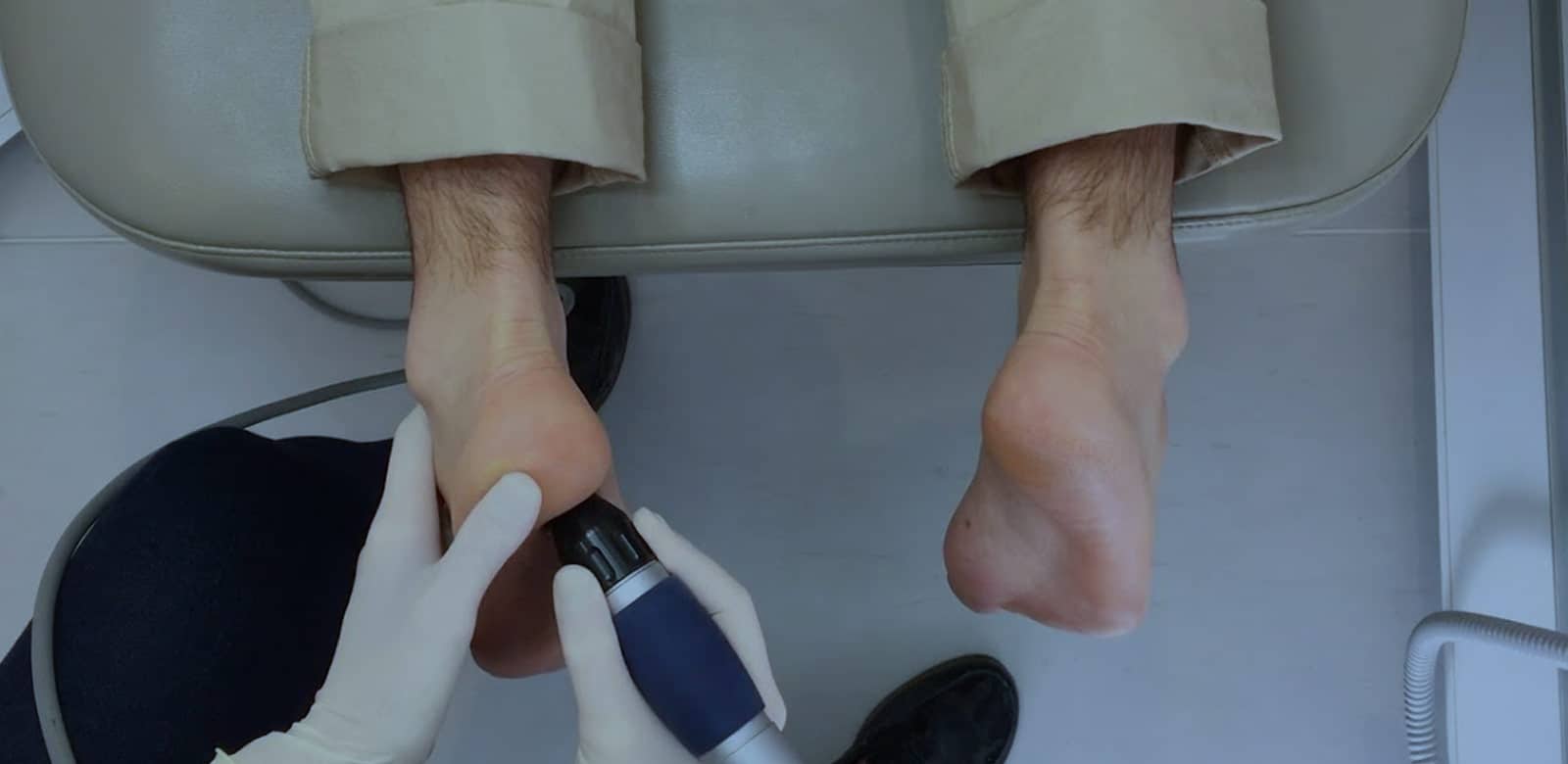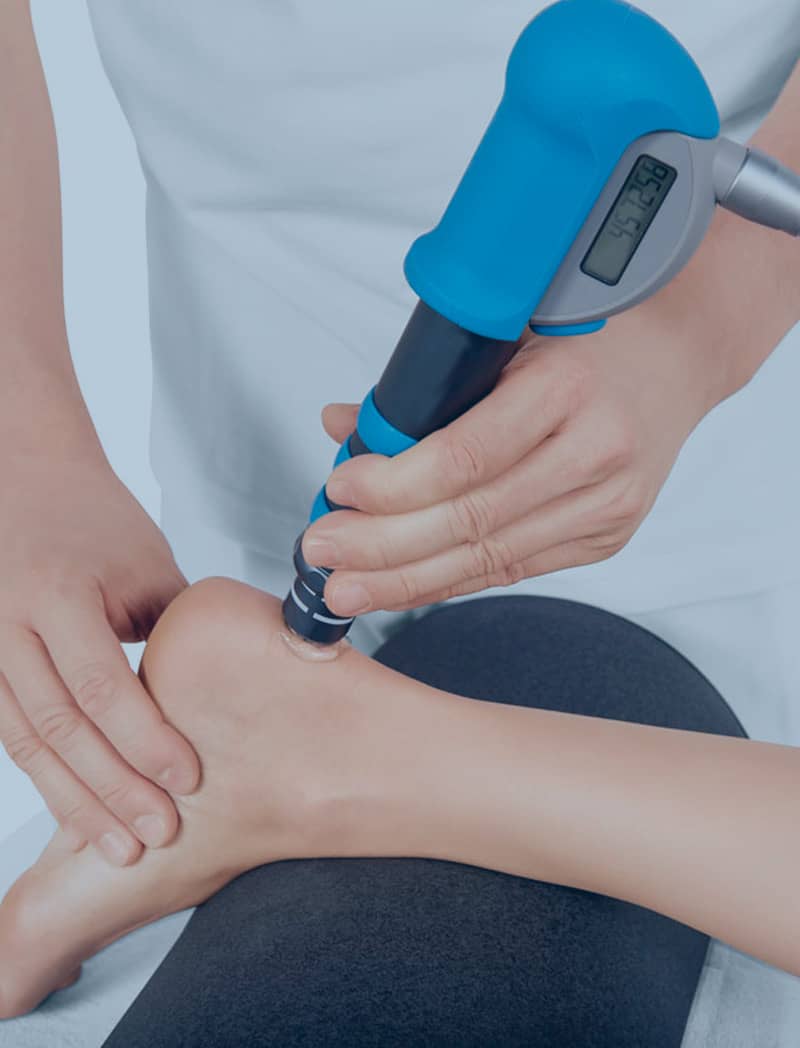
Radial Shockwave Therapy (RSWT)
Shockwave therapy is becoming more common and important in physiotherapy. The modality is effective for a lingering injury or pain resulting from illness. It is used in many musculo-skeletal conditions, especially those involving connective tissues such as ligaments and tendons. According to Medical Professionals, shockwave Therapy is also a viable option to consider for patients with chronic tendinitis that has not responded even to more conservative treatments.
What Is Shock Wave Therapy?
Radial Shockwave Therapy (RSWT) is a procedure where acoustic shock waves are passed through the skin to the injured part of the body being treated. The shockwaves are mechanical and not electric. They are audible, low energy sound waves, which work by increasing blood flow to the injured area. This initiates a bio-physical response in the injured tissue, accelerating the body’s healing process by increasing cell generation and dissolving calcium deposits.
Why Should I use Shock Wave Therapy?
Most patients with chronic pain problems have been through various unsuccessful types of treatments. Up to 80% of the same patients worldwide report that Shockwave therapy has helped them eliminate their problem. The combination of shockwave therapy and a graded tendon re-loading rehab program with our physiotherapists is recommended to give increased treatment benefits.
What is the Medical Effect of Shock Wave Therapy?
Shockwave therapy has different bio-physical effect on your tissues by which it helps cure your pain. It eliminates the pain causing deep “trigger points” from your muscles, reverses the chronic inflammation in the soft tissue and promotes collagen fibre synthesis in the joints. Studies have proven calcium build-up a.k.a calcification is most often a result of micro-tears or other trauma to a tendon. Acoustic shockwaves break up the existing calcifications and improve muscle functions and joint range of motion.
Does the treatment Hurt?
There may be a slight feeling of discomfort during the treatment, depending on the level of pain the patient is already experiencing in the area. However, since the treatment lasts only few minutes, most patients are able to tolerate this discomfort. Additionally, the intensity of the treatment can be adjusted throughout the session.
How many treatments do I need?
The number of treatments varies depending on the indication and tissue response. The effect of the treatment is cumulative, so you will typically need more than one (3–5) treatment. Very often though, you will experience relief right after the first treatment.
What happens after Shock Wave Therapy?
Most patients will experience an immediate pain relief following the treatment. However, within 2–4 hours after the treatment, they may experience some soreness in the treated area. This soreness has been reported as tolerable and not limiting. It is recommended that patients refrain from physical activity, especially one that would involve the treated region, for about 48 hours following each treatment session.

SHOCKWAVE THERAPY – AREAS OF APPLICATION
Orthopaedics
Shockwave Therapy is specifically intended for the treatment of problems with the musculo-skeletal apparatus. For example, shockwave is an effective treatment for degenerative and inflammatory joints, sciatica, disc hernias, cervicalgia, scoliosis, fractures, sprains, dislocation, torn muscles and bruising. It promotes fast re-balance of the metabolism to re-establish muscular and articulate functionality.
Pain Management
Shockwave Therapy is significantly efficient solution for pain management. With its wide range of applicators, frequencies and emission modes, Shockwave Therapy allows an immediate and effective analgesic effect. Shockwave Therapy increases the level of free radicals present in the cellular environment and led to the production of endorphins which inhibit pain and relaxes the body.
Sports Medicine
Shockwave Therapy has proved to be effective in the treatment of muscular injuries (fibrosis calcification and ossifying myositis). Shockwave Therapy accelerates the repairing of damaged muscles and scar tissues. It offers therapeutic solutions in the treatment of muscular injuries, reducing the formation of muscular fibrosis to re-gain muscular strength, which leads to greater functionality and athletic performance.
FAQs
Q. How does Extracorporeal Radial Shockwave Therapy (ESWT) work?
Answer: Shock wave therapy uses mechanical energy waves to stimulate healing in musculoskeletal tissues. It promotes blood flow, accelerates tissue repair, and reduces pain.
Q. What conditions can ESWT treat?
Answer: ESWT is often used for conditions like plantar fasciitis, tendinopathies, and Tennis Elbow. Its effectiveness may vary depending on the specific condition.
Q. Is Shock wave therapy painful?
Answer: Discomfort during treatment is common, but it is generally tolerable. The intensity can be adjusted based on patient comfort.
Q. How many sessions of Shock wave therapy are typically required?
Answer: The number of sessions varies, but a standard protocol may involve 3-5 sessions spaced about a week apart. Your physiotherapist will tailor the treatment plan based on your condition.
Q. What are the potential side effects of Shock Wave Therapy?
Answer: Side effects are usually mild and temporary, including redness or swelling. Serious complications are rare, but your physiotherapist will discuss potential risks before starting treatment.
Q. How soon can results be expected after Shock Wave therapy?
Answer: Improvement is often gradual, and some patients may experience relief after a few sessions. Full benefits may take a few weeks to months.
Q. Is shock wave therapy suitable for everyone?
Answer: ESWT is generally safe, but it may not be recommended for certain medical conditions. A thorough assessment by a physiotherapist will determine if it’s suitable for you.
Q. Can shock wave therapy be combined with other treatments?
Answer: Yes, ESWT can be part of a comprehensive treatment plan. Your physiotherapist may recommend a combination of therapies for the best results.
Q. Do I need a doctor’s prescription to get Shock wave therapy?
Always consult with a qualified healthcare professional, like a physiotherapist, for personalized advice regarding ESWT and its suitability for your specific situation.
